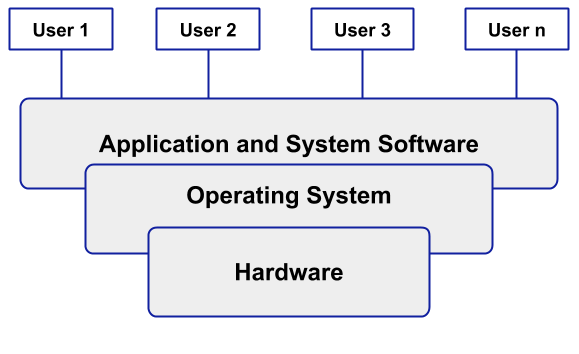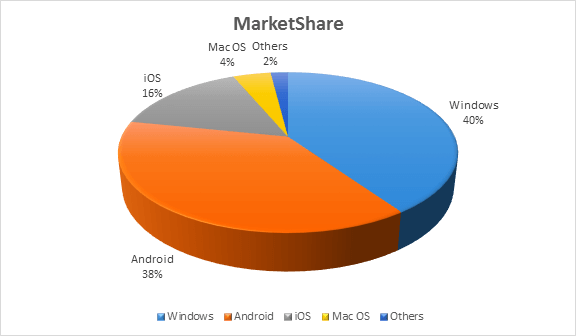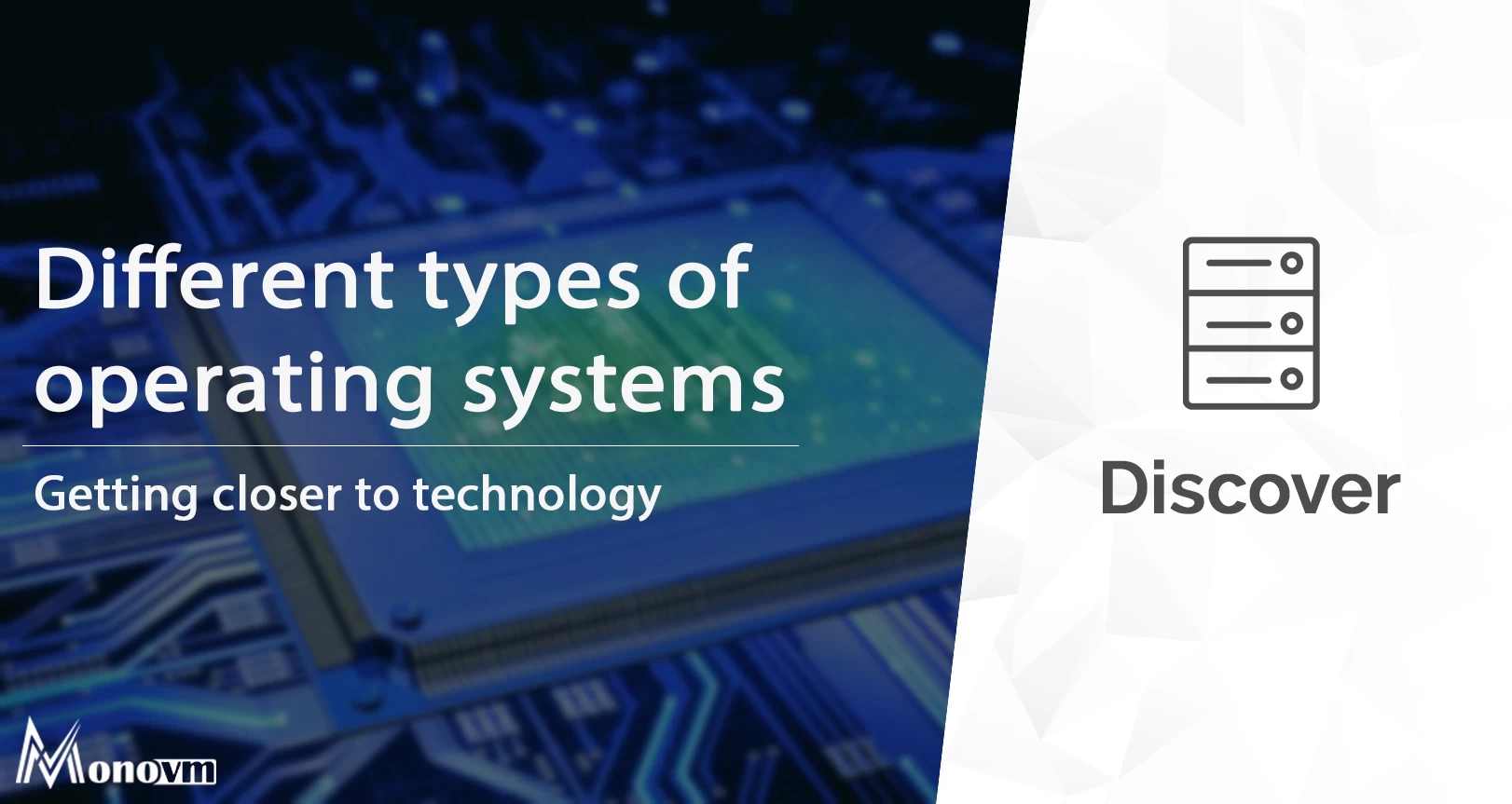List of content you will read in this article:
You cannot directly communicate with the hardware of the systems. For that, we require software that will convert our instructions to the machine language understood by hardware. This is where the operating system comes into action. Every device, such as computers, mobile phones, comes with an operating system that is the engine behind the proper functioning of these devices. The operating system can handle various tasks simultaneously without impacting the performance of your devices.
There are various benefits of having an operating system on your devices. Nowadays, you will come across multiple operating systems available in the market that can be chosen as per your requirement. Before that, we will discuss the basic definition of the operating system, its functions, and various types.
What is the operating system?
An operating system is a software, acting as an intermediate between the hardware and the user using the system. It manages every resource available on the system among hardware and software. The operating system provides a platform to run various applications or programs efficiently without impacting the working of each other.
The conceptual view of the operating system is shown below.

In the above image, the hardware is present at the lower level and to communicate with it; you will require the Operating System that is available just above the hardware. Then above the OS, various application software and system software are present. The Operating System is a mediator for the communication between the user and the hardware.
Essential functions of an Operating System
Following are the basic functionalities of the operating system that helps in managing the entire system effectively.
- Process management- the CPU can simultaneously have various processes in the ready state. But only a single process can be processed by the processor. So the CPU must use some algorithms to provide unified access of its resources to every process in the ready state.
- Memory management- for executing the process, they need to be moved to the main memory. It is the responsibility of the OS to make sure that the occupied memory will be freed after the execution of the process. It includes the allocating and deallocating of the memory to the processes.
- I/O device management- a system that has various I/O devices available. Many processes might require to access these I/O resources. But they cannot access them directly. Thus, OS will make sure that I/O devices are available for these processes in need.
- File management- the operating system maintains all files and folders within a system with the help of the file allocation table. Every detail regarding files is stored within the file allocation table, and OS is responsible for handling these files.
Types of Operating Systems
The operating systems have evolved as per the changing requirement of the businesses. Here, we list the various types of OS available and used.
Batch Operating System
This type of OS groups similar jobs into batches using some operators. You can execute these batches one by one, for example. Suppose we have several programs in C++ and Java. If we run these programs one by one, we need to load the compiler each time. Instead of doing that, we will group all the C++ programs and Java programs in another batch. Then for the C++ batch, we have to load the compiler only once, and the same goes with the Java programs.
Advantages-
- It reduces the time taken to execute all the programs.
- The Batch OS can easily be shared among various users.
Disadvantages-
- You will have to do manual work between the two batches.
- It will utilize the CPU at a low rate as the loading and unloading of the batches will take more time than the execution time.
Time-sharing Operating System
With the time-sharing concept, you can efficiently execute several processes simultaneously. In this type of OS, we will decide a specific time (quantum) for executing the processes, and the execution will continue for that amount of time. Once the period is over, other processes will be implemented for another specified amount of time. This process will continue till the execution of all processes.
Advantages-
- Each process is allocated with a specific amount of time for execution.
- It will reduce the idle time of the CPU.
- It avoids the duplication of software.
Disadvantages-
- It can cause the problem of reliability.
- It may raise concerns regarding the security and integrity of user programs.
Distributed Operating System
Each system has its CPU, memory, and resources in this type of OS. All systems on the network are connected via a shared communication network. In this type of OS, one system can access the data of another system via remote access. Distributed systems have central processors used by multiple real-time applications and users. This makes it possible to spread the data processing jobs between the processors.
Advantages-
- All the resources being distributed among all the systems increase availability across the entire system.
- Due to data replication across all sites, there is less chance of data corruption.
- Each system can operate independently of the other; thus, one system failure will not impact the working of another system.
- You can exchange data fastly from one system to another.
- It reduces the data processing time.
Disadvantages-
- You need to implement extra security measures to ensure the safety of the data across sites.
- If the communication network fails, it becomes difficult to connect from one system to another.
- As compared to the single-user system, it isn't easy to manage the database connected to DOS.
Embedded Operating System
This type of OS is specially designed for embedded computer systems to perform specific tasks. These OS are small, dependable, and resource-efficient. For example, the software intended for elevators can only work for that. Such type of OS has resource-constrained hardware.
Advantages-
- This type of OS has a dedicated task, so they are fast.
- They are low-cost OS.
- It requires less memory and resources.
- It increases the quality of the product.
Disadvantages-
- These are hard to maintain, manage, and troubleshoot.
- It has limited memory resources.
- In case of failure, you need to reset the entire settings.
- It has limited hardware.
- These are hard to upgrade and scale.
Real-time Operating System
This type of OS is proper when dealing with real-time data. Thus, whenever the data is available, it needs to be executed within a limited time without any delay. Real-time OS is based on the clock interrupt. So, for processing a large number of requests in a brief period, you need the Real-time Operating System.
Advantages-
- It increases the utilization of devices and systems.
- These systems will take less time for shifting the tasks.
- It has all its focus on running the applications rather than on the applications in the queue.
- It manages the allocation of memory in a better way.
Disadvantages-
- You can run only a limited number of tasks at a single time.
- You will not get good system resources and are expensive.
- The used algorithms are complex and hard to write.
- It performs minimal task switching.
Common operating systems today
Following are the most common operating systems that are in use. Below is the market share of the available OS.

Microsoft Windows
It was created by Microsoft and is one of the computers' most popular operating systems. One downside of Windows is that it might show compatibility issues with mobile phones.
Apple iOS
Apple iOS from Apple is commonly used on smartphones manufactured by the same company. Apple users can access thousands of applications. This operating system offers robust encryption features for controlling unauthorized access to users' private data.
Google Android
Android from Google is another popular operating system used worldwide. It is used primarily on tablets and smartphones. It runs on devices that other manufacturers create. Users can access several mobile applications available on the Google Play Store.
Apple macOS
Developed by Apple, this operating system efficiently runs on the manufacturer's personal computers and desktops.
Linux
It was created by the Finnish programmer Linus Torvalds. You can see various distributions of Linux developed by programmer collaborators across the world who submit tweaks to the central kernel software. Linux is popular among programmers and corporate servers. You can avail of it for free.
Conclusion
The operating system is one of the crucial parts of the computer that can handle each and every task along with the user's interaction with the hardware. Without the OS, no machine will function properly as the hardware will not directly understand the users' language. There are various types of OS available in the market that you can choose as per your business requirement. OS has shown tremendous evolution over time and now can fulfil every need of any user.

I'm fascinated by the IT world and how the 1's and 0's work. While I venture into the world of Technology, I try to share what I know in the simplest way with you. Not a fan of coffee, a travel addict, and a self-accredited 'master chef'.